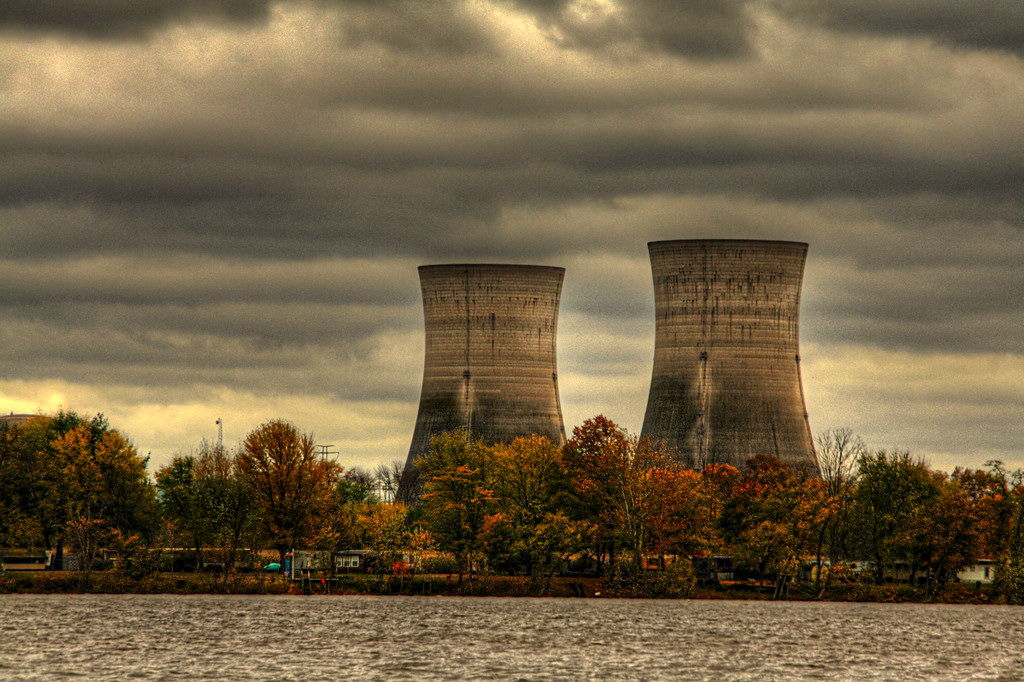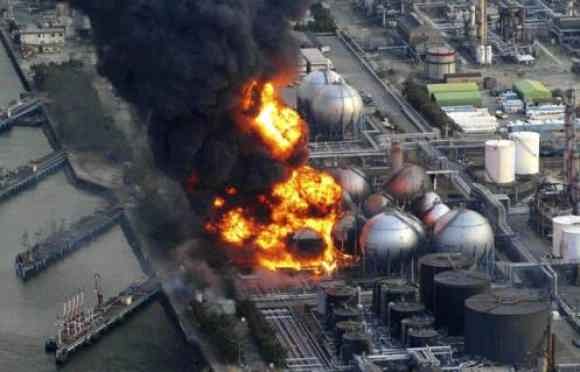CBS 60 Minutes drone-video of the Chernobyl Zone of Alienation, a safe area.
Here is an excerpt from a 1975 resume about my experience in the nuclear power industry:
Engineering Technician at Ingersoll-Rand Company. Designed and serviced pumps and condensers for nuclear power plants; assisted engineers on service calls; toured and worked inside nuclear power plants; trained in construction and operation of nuclear power plants.
I didn’t last long at Ingersoll-Rand before they fired me for incompetence. But during the six months before my meltdown they sent me inside nuclear power plants to learn how to operate and maintain the pumps and condensers used to move and cool liquids inside the plants. Under the supervision of licensed nuclear engineers I learned how to inspect and fix pumps — some of them the size of little houses.
The plant executives had the habit of inviting visiting engineers and technicians to lunch, where their supervisors would present short overviews of plant operation, describe safety features, and speculate about the future of nuclear energy in the United States.
They promised that the government planned to approve the construction of a thousand nuclear power plants by the year 2000. The facilities would be “fail-safe” due to their many redundant safety features. As it turned out, their enthusiasm was misguided.
As of today, 438 nuclear power plants have been built in the entire world. The United States operates 61. The safety record is abysmal.

Currently, there are 30 operating nuclear reactors at 12 generating stations on 11 sites in the Great Lakes basin. Almost all are located on the banks of our great fresh-water lakes. Radioactive waste-products are stored in cooling-ponds at each of these sites yards away from the purest fresh-water on planet Earth.
Highly radioactive, spent-fuel rods are collected and dry-stored at Chicago’s Lake Michigan Zion facility, which experts warned in 2015 pose risks not only to the Great Lakes but to the entire region. The lethal dry-storage facility and the contaminated ponds at power-plants located on the shores of the Great Lakes grow in size and radioactivity year after year after year.
Editors note: On 25 October 2016, Energy Solutions announced that the Zion plant is 88% shut down and that all of its high radiation fuel rods are now contained inside an on-site ISFSI (Independent Spent Fuel Storage Installation) where they will remain until someone figures out what to do with them. The entire facility is scheduled for closure by January 1, 2027 at a cost of 1 billion dollars.
We are one earthquake away from catastrophic contamination of up to ten percent of the world’s freshwater supply.


Editor’s Note added 3-11-2021:
The Japanese government announced this week that 3,775 people died during the past decade from health problems caused by what officials now admit was a “triple meltdown” at Fukushima. 41,000 remain forced to live outside their hometowns.
Several districts near the plant continue to be off-limits to everyone. The government hopes to decommission the power plant by 2051.
The ruined facility houses 900 tons of highly radioactive debris and 1.2 million tons of radioactive water that must be removed and isolated before the plant can be safely closed. The coronavirus pandemic slowed progress at the site, according to NHK News.
Anyway, after the lectures — which were accompanied by short films and slide presentations — executives opened the sessions for questions from the audience. I was one of those nerds who believed they were serious so I did ask a lot of questions. (I was a pontificator even then).
I asked: What is the half-life of the radioactive waste produced in this plant? Where is waste stored? How much of it will this plant produce over the next 30 years? What happens during an earthquake? How are meltdowns prevented? What are the consequences of operator errors? What happens when the plant gets old and comes to the end of its useful life?
It wasn’t long before my supervisor called me into his office and advised me to keep my questions to myself and do my job better. But it was not to be. I learned a life lesson: when the boss tells you to be quiet and just do your job — hold on to your hat. It’s too late. You will be fired as soon as the permissions and the paperwork are done.
Maybe I was incompetent. I don’t know. After being fired I went into counseling for depression. I re-entered MSU and studied mathematics and electrical engineering. I ended up designing machinery — mostly in the food and beverage industry — until I retired six years ago in 2008.
Everyone uses tear-spout coffee lids on foam coffee cups. Folks drink their coffee without removing the lid. Yeah, I designed the first one and the tooling to produce it; it was a team effort, of course. Everyone buys orange juice and milk cartons with tamper-proof safety caps. Yeah. I did those too. I share a patent, which proves it.
What am I most proud of? I didn’t design a damn thing on that Fukushima disaster, which is contaminating the Pacific Ocean and its fish stocks, perhaps to the end of time.
Billy Lee
NOTE from the EDITORIAL BOARD: In May 2019, HBO released its award nominated series on the Chernobyl disaster of April 25, 1986. The producers speculate that up to 93,000 Russian citizens died in the aftermath from radiation poisoning. The video below is a promo of the series.


Great blog. Thanks for sharing.